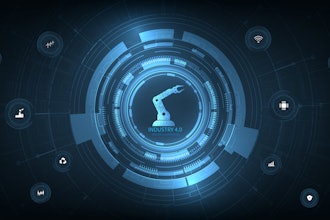With Amazon.com this week unvealing its Drone Store, a one-stop shop for unmanned aerial vehicles, the interwebs are abuzz with the prospect of more and more people having their own UAV for personal use. But while air drones have been a hot topic of discussion for more than a year now, there's another highly-intriguing prospect that seems to be on no one's radar yet: Sea drones.
While drones traveling on water may not have the same sexy appeal as having a package air-delivered from Amazon or another retailer within 30 minutes over land, the idea of using drone technology in the shipping industry could be a lucrative one for both distributors, manufacturers, and the environment. DNV GL, the world's largest classification society, recently released concept details for "ReVolt", an unmanned, battery-powered short sea vessel that can save up to $34 million in its lifetime over conventional diesel-run ship, and be a solution to crew fatalities aboard ship.
Powered by a 3,000 kilowatt battery, the ship has a nautical range of 100 miles before the battery needs recharged. "ReVolt" doesn't require a crew, thus eliminating crew fatalities and injury risk. No crew also means no on-deck superstructure, which results in a greater loading capacity.
With an average speed of 6 knots, "ReVolt" is slower than the typical 8-9 knots of other ships, but DNV GL says the slight loss of speed results in less water resistance, saving energy.
The concept-ship is currently still being tested.
“Building and operating this vessel would be possible with today’s technology," DNV GL Senior Researcher Hans Anton Tvete said in a statement. "‘ReVolt’ is intended to serve as inspiration for equipment makers, ship yards and ship owners to develop new solutions on the path to a safe and sustainable future."






















